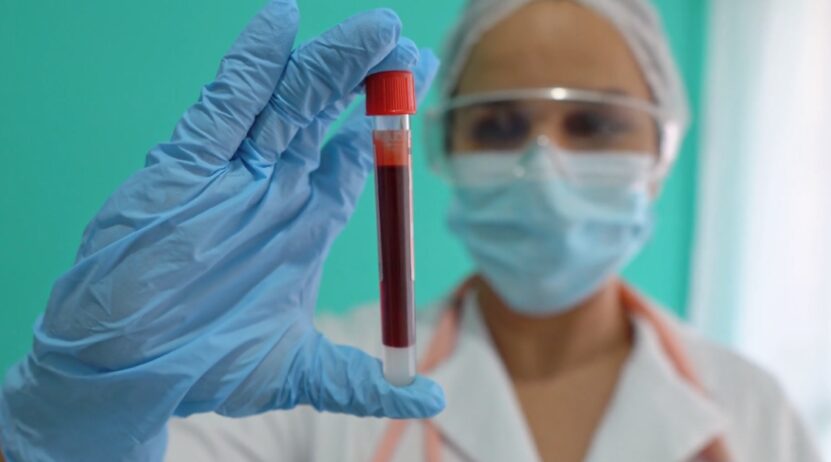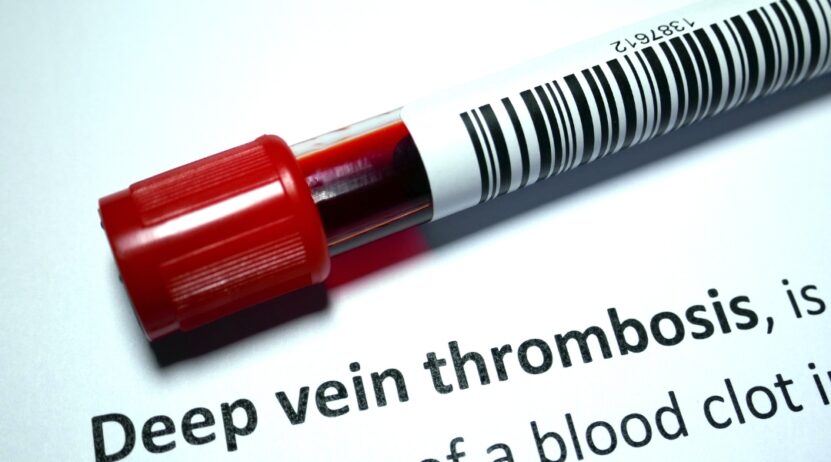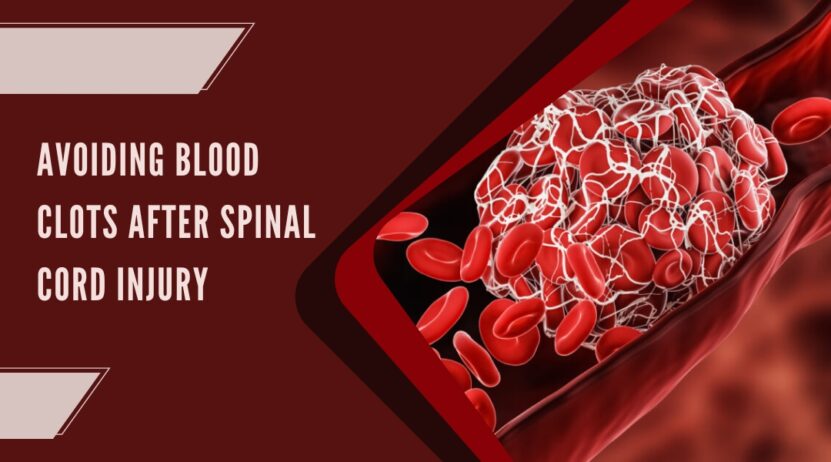In the wake of a spinal cord injury (SCI), there are numerous potential complications to consider, and among these, blood clots stand as a prominent concern. These clots, formed by coagulated blood within a blood vessel, can disrupt the flow of blood, leading to serious and sometimes life-threatening conditions such as strokes, pulmonary embolisms, or deep vein thrombosis (DVT). The risk of clot formation increases considerably following SCI due to limited mobility and changes in blood flow and vessel wall health.
Understanding the risk factors and signs of blood clots can make a life-saving difference. Equally critical is knowing how to reduce the likelihood of their formation. This comprehensive guide aims to empower you with knowledge and strategies to prevent blood clots after a spinal cord injury, allowing you to focus on recovery and regain control over your life.
Dealing with an SCI is undoubtedly a significant challenge. However, armed with the right knowledge and approach, you can effectively mitigate some of the risks associated with this condition. This guide serves as a beacon, providing a clear path forward in managing and reducing the risk of blood clots post-SCI.
The Importance of Recognizing Early Warning Signs

The early detection of blood clots can be a literal lifesaver. Common signs can include swelling, pain, or warmth in an arm or leg, chest pain, shortness of breath, or sudden-onset severe headaches. These symptoms are indicators that a clot may be present and obstructing blood flow. While these symptoms are not exclusive to blood clots and can be seen in other conditions, they should never be ignored.
It is essential to keep in mind that these symptoms might be subtle, especially in the initial stages of clot formation. Thus, maintaining constant vigilance and awareness of bodily changes is crucial. A change in skin color or noticeable swelling in an area might be the only visible signs before a clot dislodges and becomes a more severe problem.
Educating yourself and caregivers about these warning signs can significantly reduce the time to medical intervention, increasing the chances of successful treatment. Do not hesitate to seek medical help if you suspect a blood clot. Prompt attention can mean the difference between manageable treatment and a severe, life-threatening event.
Maintaining Proper Hydration to Prevent Blood Clots

Hydration plays a crucial role in preventing blood clots. When your body is well-hydrated, your blood is less viscous, reducing the likelihood of clot formation. Furthermore, proper hydration promotes overall cardiovascular health, further reducing your risk of complications such as blood clots.
Aiming for at least eight glasses of water a day is a good starting point. However, the ideal amount of fluid can vary based on factors like body weight, climate, and physical activity levels. Infusing your water with fruits or opting for herbal teas can make the task more enjoyable if you find drinking plain water monotonous.
While hydration is critical, it’s equally important to remember that not all fluids are created equal. Certain drinks, like those high in sugar or caffeine, may lead to dehydration, counteracting your efforts. Also, alcohol can have a similar dehydrating effect and should be consumed moderately, if at all.
Why Regular Physical Activity and Exercise Matters

Physical activity and exercise are vital components of blood clot prevention. They help boost circulation, reduce inflammation, and maintain vessel health – all crucial factors in avoiding clot formation. While mobility may be limited after a spinal cord injury, there are still many ways to incorporate physical activity into your routine.
Adaptive exercises, specifically designed for individuals with SCI, can be performed even from a wheelchair. These exercises range from strength training to cardiovascular workouts and can be tailored to individual capabilities and needs. Regular physical therapy sessions can also be beneficial, providing targeted exercises that improve muscle strength and circulation.
Even simple activities like passive range of motion exercises or bed exercises can be beneficial. Remember, the goal is not necessarily to break a sweat but to keep blood flowing and avoid long periods of immobility. Consulting with a physical therapist can help you create an exercise routine that suits your needs and abilities.
Proper Positioning and Frequent Movement

For individuals with a spinal cord injury, prolonged immobility can be a significant contributor to blood clot formation. In response, proper positioning and frequent movement are recommended to promote blood circulation and reduce the risk. This may mean adjusting your sitting or lying positions, performing wheelchair push-ups, or even slight leg and arm movements throughout the day.
When sitting, it’s advisable to change positions every 15-30 minutes, even if the adjustments are minor. If you’re in bed, turning every two hours is recommended. Remember, even these small movements can have a significant impact on promoting blood circulation and preventing clots.
Pressure-relieving cushions and mattresses can also be beneficial. By distributing body weight evenly, these tools can reduce pressure points that might impede blood flow. Using them in combination with frequent repositioning can significantly lower the risk of clot formation.
The Role of Compression Stockings in Blood Clot Prevention
Compression stockings can play a significant role in preventing blood clots. They exert gentle pressure on the legs, promoting blood flow and helping prevent the pooling of blood that can lead to clots. This is particularly beneficial for those with limited mobility following a spinal cord injury.
Compression stockings come in various sizes, styles, and pressure levels. It’s important to get the right fit and pressure level for your needs, as incorrectly fitted stockings can cause problems rather than solve them. Consulting with a healthcare professional is advisable before starting to use compression stockings.
However, while these garments can be an excellent tool in the battle against blood clots, they are not a standalone solution. They should be used in conjunction with other strategies like maintaining hydration, regular movement, and a healthy diet.
Medication and Anticoagulant Therapy

In some cases, medication may be necessary to prevent blood clots. Anticoagulants, also known as blood thinners, can prevent new clots from forming and stop existing ones from growing. These medications don’t actually thin the blood but prevent it from coagulating as easily.
These medications are typically prescribed based on the individual’s risk factors for clot formation. It’s important to understand that while they can be effective, they also come with risks, such as increased bleeding. Therefore, they must be used under the supervision of a healthcare professional.
Additionally, regular follow-ups and blood tests are usually required when on anticoagulant therapy to ensure the medication’s efficacy and monitor for potential side effects. It’s essential to take these medications as directed and report any unusual symptoms to your healthcare provider immediately.
Dietary Considerations
Diet plays a substantial role in preventing blood clots. Foods rich in vitamin E and omega-3 fatty acids, such as fish, nuts, and seeds, can help prevent blood clot formation. Additionally, consuming a diet rich in fruits, vegetables, and whole grains can promote overall cardiovascular health.
It’s also important to limit your intake of foods high in vitamin K if you’re on certain types of anticoagulant medication, as this vitamin can counteract their effects. Foods high in vitamin K include leafy green vegetables, broccoli, and Brussels sprouts.
However, diet is a complex issue, and individual nutritional needs can vary widely. Consulting with a nutritionist or dietitian can provide personalized advice tailored to your needs and health status.
Importance of Smoking Cessation

Smoking can have a multitude of negative effects on your health, including an increased risk of blood clots. The chemicals in cigarettes can cause your blood to thicken and form clots more easily. Additionally, smoking damages the lining of your blood vessels, which can further contribute to clot formation.
If you’re a smoker, quitting can significantly reduce your risk of developing a blood clot. There are numerous resources and cessation programs available to help you quit, from nicotine replacement therapies to support groups and counseling.
Remember, it’s never too late to quit smoking, and doing so will not only reduce your risk of blood clots but also improve your overall health. The benefits of quitting smoking extend far beyond clot prevention, including improved lung function, lower risk of heart disease and cancer, and better overall quality of life.
Recognizing the Dangers of Prolonged Sedentary Behavior after Spinal Cord Injury
After a spinal cord injury, it’s easy to fall into a pattern of prolonged sedentary behavior due to mobility challenges. However, long periods of inactivity can significantly increase the risk of blood clots. When the body is immobile, blood flow slows down, especially in the lower extremities, providing an ideal environment for clots to form.
Break up long periods of inactivity with small movements or changes in position. If you’re watching television or reading, set a reminder to move every half hour. Even minor movements can stimulate blood flow and help prevent clots.
Remember, every bit of movement counts. While physical limitations may restrict some activities, there are always ways to incorporate movement into your day. Whether it’s gentle stretching, changing position, or doing wheelchair exercises, stay active to promote circulation and ward off clots.
The Link Between Deep Vein Thrombosis (DVT) and Blood Clots

Deep vein thrombosis (DVT) is a specific type of blood clot that forms in a deep vein, usually in the leg. DVT is especially dangerous because if the clot breaks loose, it can travel to the lungs and cause a potentially life-threatening pulmonary embolism. Individuals with a spinal cord injury are at a higher risk of DVT due to decreased mobility.
Symptoms of DVT can include pain, swelling, and warmth in the affected leg. However, it’s possible to have DVT with no noticeable symptoms. If you suspect you may have DVT, it’s important to seek immediate medical attention.
Prevention of DVT involves many of the same strategies as general blood clot prevention, including hydration, regular movement, and in some cases, the use of anticoagulant medications. Regular check-ups with your healthcare provider can also help catch and treat DVT before it leads to serious complications.
When to Consult a Healthcare Professional
In the journey to prevent blood clots after a spinal cord injury, your healthcare provider is an invaluable ally. They can provide personalized advice based on your specific circumstances, risk factors, and overall health status. Regular check-ups can help monitor your health and catch potential problems early.
If you suspect that you may have a blood clot or are experiencing unusual symptoms, it’s crucial to seek medical help immediately. Blood clots can quickly become life-threatening if not treated promptly.
Also, remember to consult with your healthcare provider before making any significant changes to your exercise routine, diet, or medications. These factors can all influence blood clot risk, and it’s essential to ensure any changes you make are safe and beneficial for your health.
Final Words
Living with a spinal cord injury presents unique challenges, including an increased risk of blood clots. However, with the right knowledge and strategies, it’s possible to significantly reduce this risk. From maintaining proper hydration to regular movement, medication management, and lifestyle modifications, each step you take brings you closer to a safer, healthier life.
Remember, you’re not alone in this journey. Reach out to healthcare professionals, support groups, and loved ones for help and support. With resilience, knowledge, and the right care, you can successfully navigate life after a spinal cord injury and thrive in the face of adversity.

